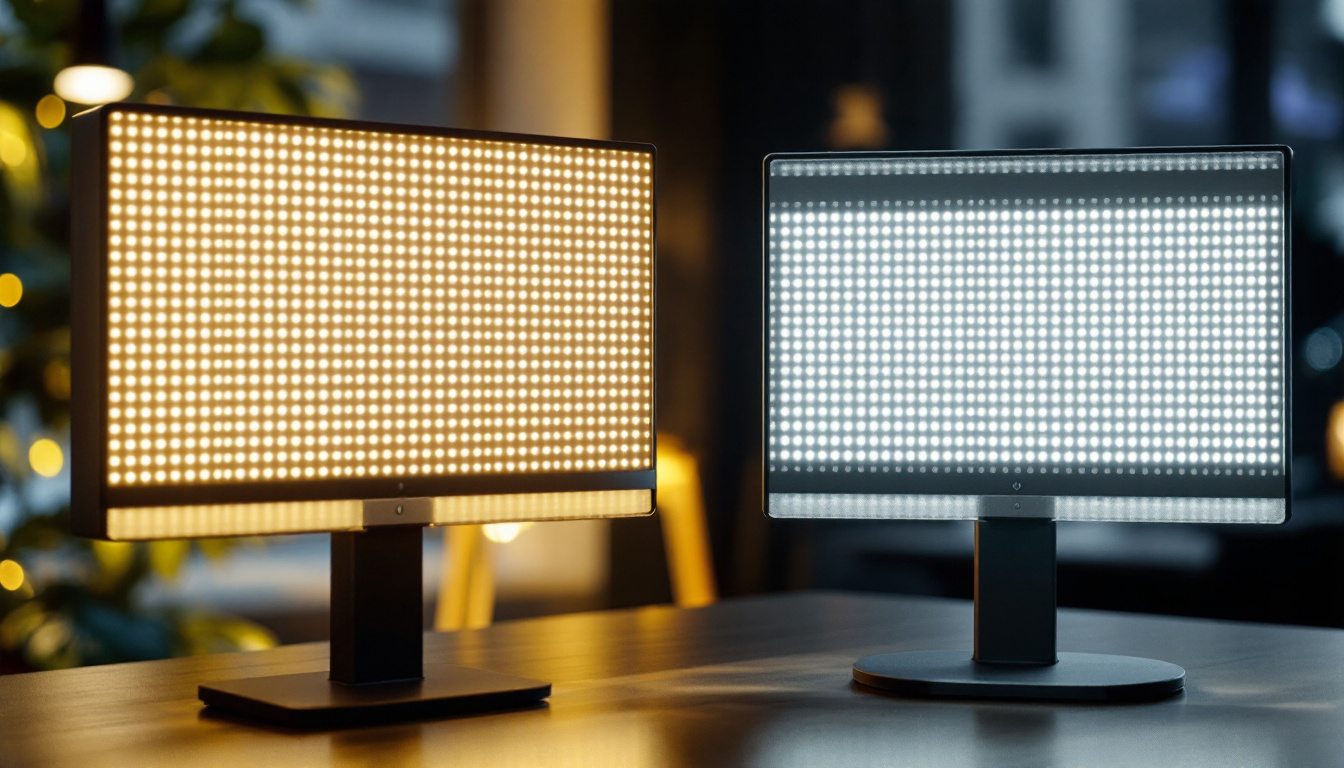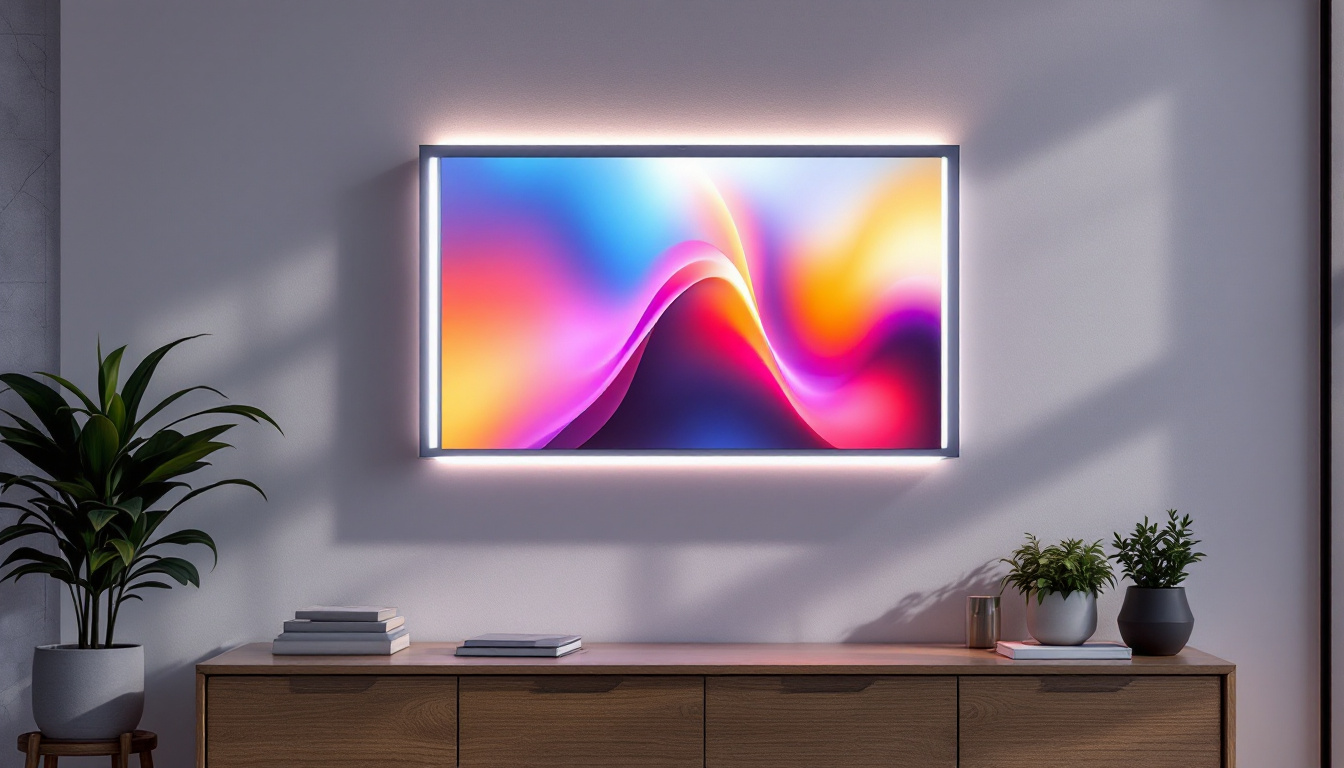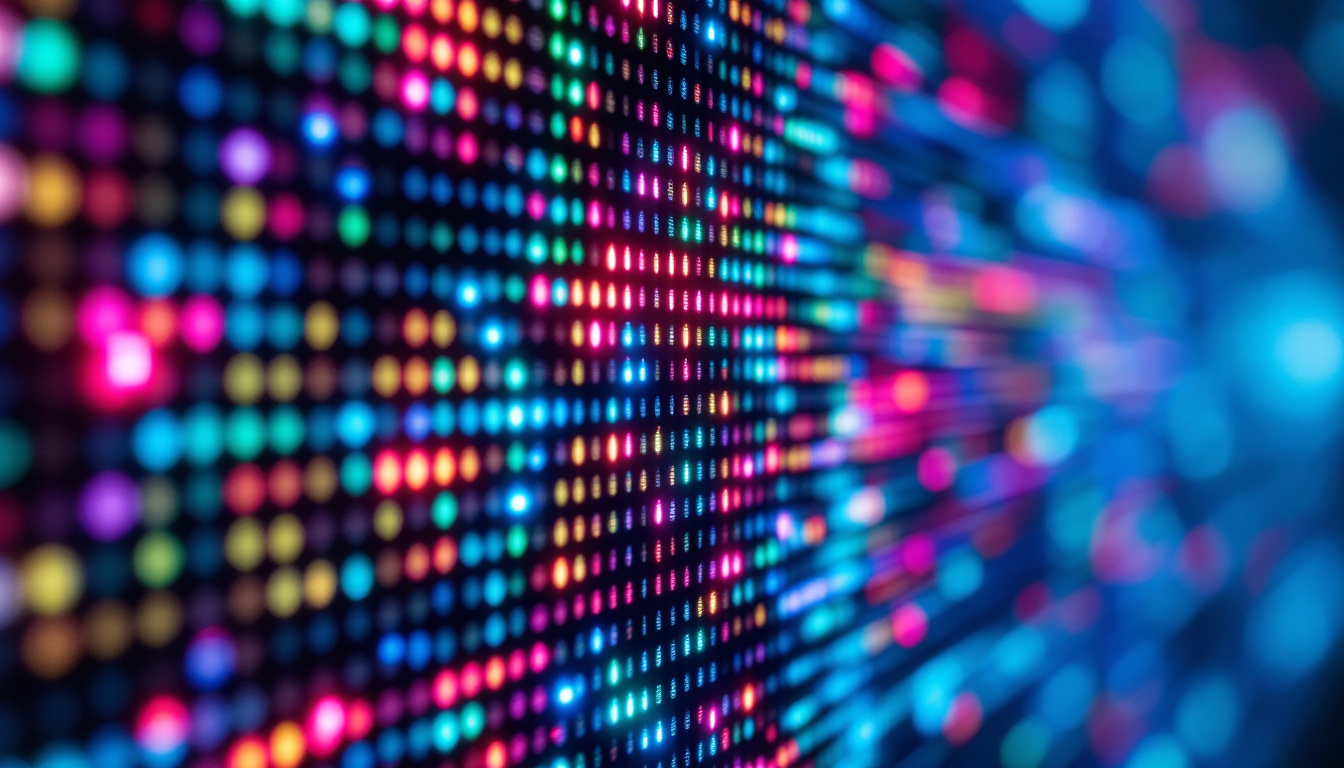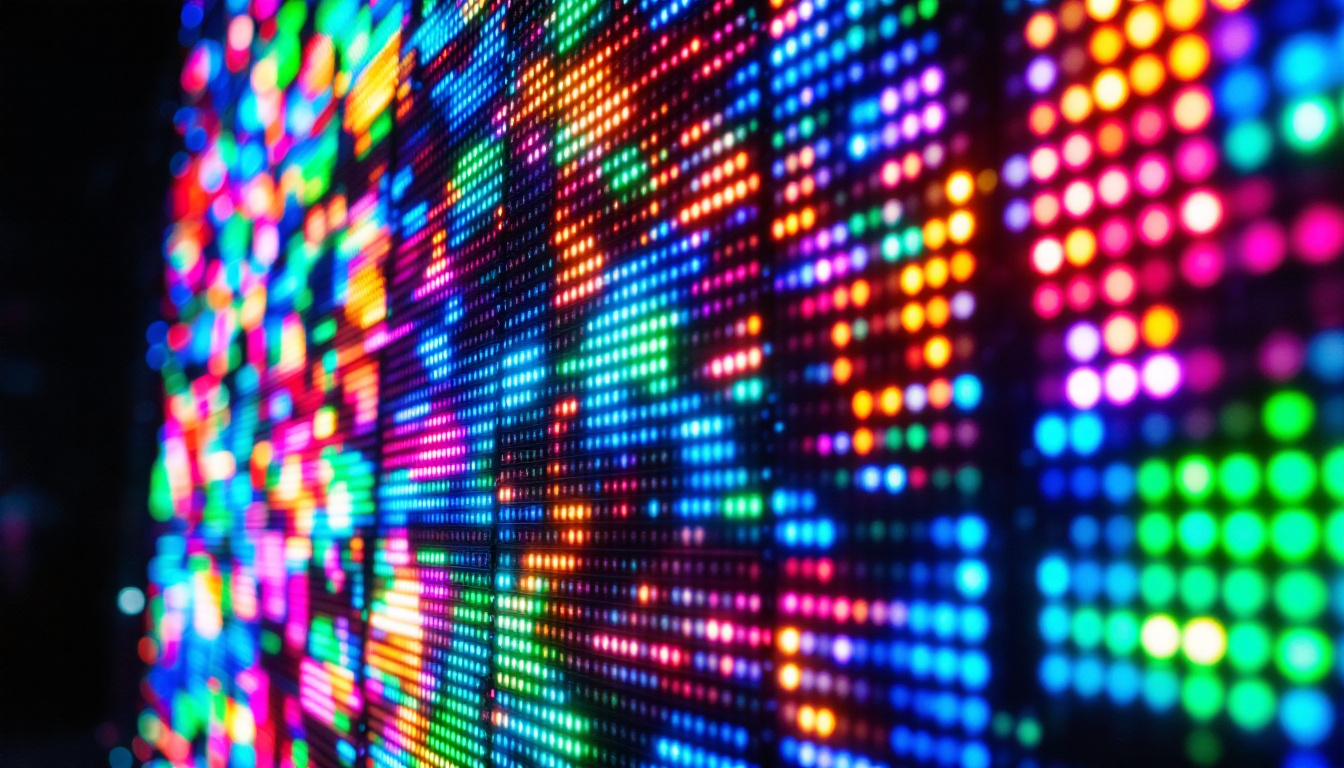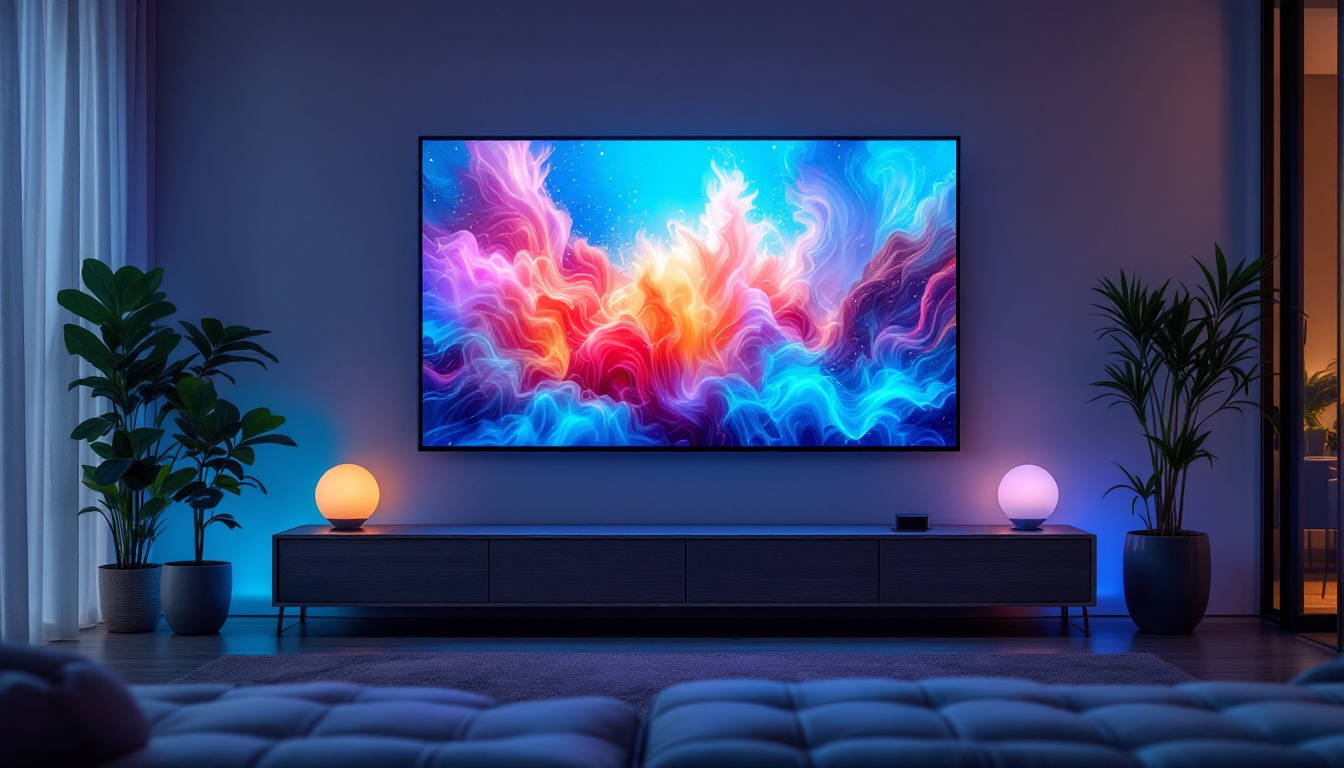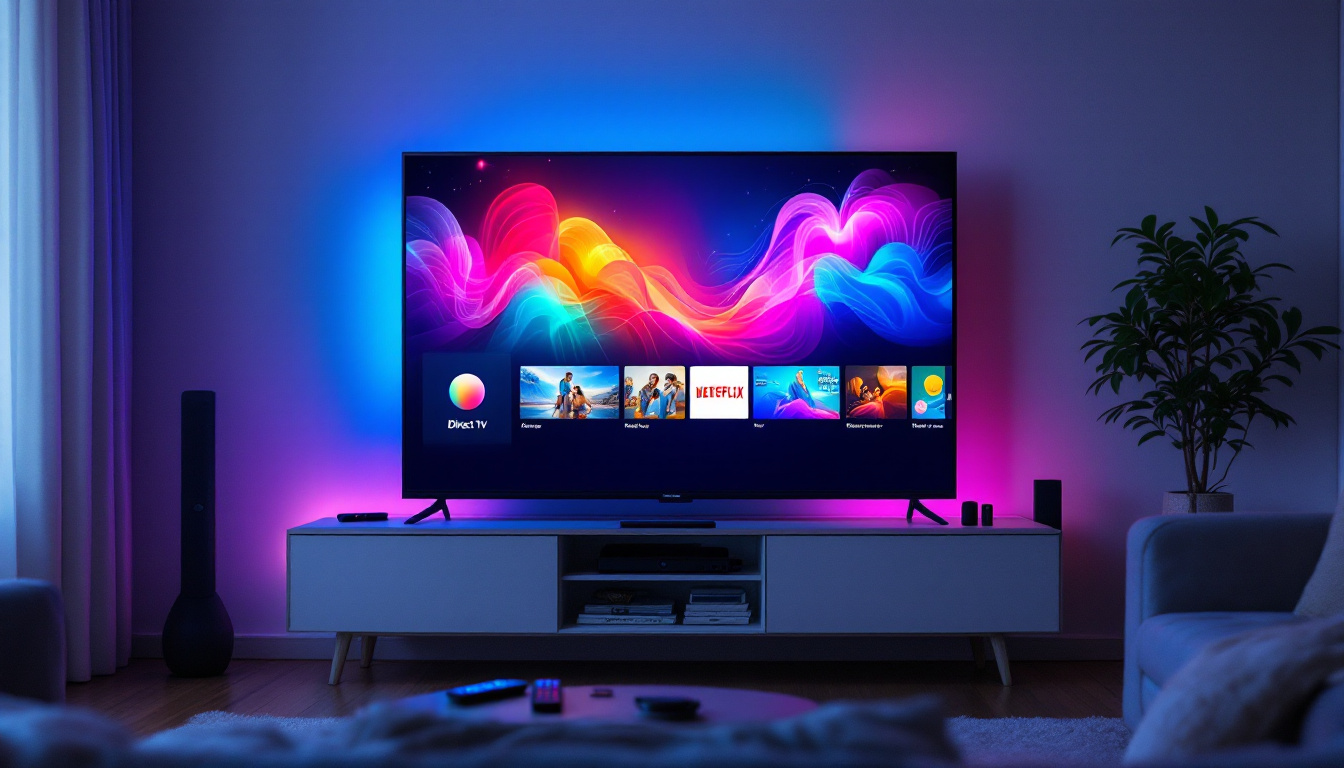In the evolving world of display technology, LCD (Liquid Crystal Display) screens have become ubiquitous, powering everything from smartphones to large-scale televisions. At the heart of these displays lies a complex matrix of pixels, which work in tandem to produce vivid images. This article delves into the workings of LCD screens, with a particular focus on their matrix structure and how LED technology enhances their performance.
Understanding the Basics of LCD Technology
To appreciate the intricacies of LCD screens, it is essential to understand the fundamental principles behind their operation. LCD technology utilizes liquid crystals to modulate light, creating images that are sharp and vibrant. The display is composed of several layers, including a backlight, polarizers, and the liquid crystal layer itself.
The Structure of an LCD Screen
An LCD screen is built upon a layered architecture. The backlight, often made from LEDs, provides the necessary illumination. This light passes through a series of polarizers, which filter the light before it reaches the liquid crystal layer. The liquid crystals can change their orientation when an electric current is applied, allowing them to either block or transmit light.
Each pixel on the screen is made up of subpixels, typically red, green, and blue (RGB). By adjusting the intensity of these subpixels, the screen can produce a wide spectrum of colors. The combination of these elements creates the images that users see on their devices. Additionally, advancements in technology have led to the development of various types of LCDs, such as IPS (In-Plane Switching) and TN (Twisted Nematic) panels, each offering distinct advantages in terms of color reproduction and viewing angles, catering to different user needs and preferences.
How Liquid Crystals Work
Liquid crystals are unique substances that possess properties of both liquids and solids. They can flow like a liquid but have a degree of molecular order similar to solids. This dual nature allows them to manipulate light effectively. When no voltage is applied, the liquid crystals are arranged in a way that scatters light. However, when an electric field is introduced, the crystals align themselves, allowing light to pass through more efficiently.
This ability to control light is what makes LCD technology so versatile and widely used. From computer monitors to televisions, the clarity and color accuracy provided by liquid crystals enhance the viewing experience significantly. Furthermore, the energy efficiency of LCDs compared to older technologies, such as CRT (Cathode Ray Tube), has made them a popular choice for portable devices. Their lightweight design and slim profile have revolutionized the way we interact with technology, allowing for the creation of sleek laptops, tablets, and smartphones that fit seamlessly into our daily lives.
The Role of the Matrix in LCD Screens
The term “matrix” in the context of LCD screens refers to the grid-like arrangement of pixels. Each pixel is a tiny unit that can be independently controlled to create the desired image. This matrix structure is crucial for achieving high resolution and detail in displays. The arrangement of these pixels not only influences the visual output but also plays a significant role in how the screen interacts with light, affecting brightness and contrast levels.
Pixel Density and Resolution
Pixel density, measured in pixels per inch (PPI), is a critical factor in determining the clarity of an LCD screen. Higher pixel density means more pixels are packed into a given area, resulting in sharper images. Modern displays often feature resolutions such as Full HD (1920×1080), 4K (3840×2160), and even 8K (7680×4320), all of which rely on the efficient arrangement of pixels within the matrix. As a result, the user experience is significantly enhanced, with images appearing more lifelike and immersive.
A higher resolution allows for finer details to be displayed, making it particularly important for applications such as gaming, graphic design, and video editing. As technology advances, the demand for higher resolutions continues to grow, pushing manufacturers to innovate in pixel arrangement and matrix design. Additionally, advancements in color reproduction and contrast ratios are often linked to improvements in pixel density, allowing for a broader spectrum of colors and deeper blacks, which are essential for high-quality visual content.
Matrix Types: Active vs. Passive
LCD screens can be categorized based on their matrix type: active matrix and passive matrix. Active matrix displays utilize a thin-film transistor (TFT) for each pixel, allowing for faster response times and better image quality. This technology is prevalent in modern devices, providing vibrant colors and high refresh rates. The active matrix design also enables features like touch sensitivity and multi-touch capabilities, which have become standard in smartphones and tablets.
On the other hand, passive matrix displays use a simpler grid of conductors to control the pixels. While they are less expensive and consume less power, passive matrix displays typically suffer from slower response times and poorer image quality. As a result, they are less common in high-end applications. However, passive matrix technology can still be found in specific niche markets, such as low-power devices and simple display panels where cost efficiency is prioritized over performance. Understanding the differences between these matrix types is essential for consumers and manufacturers alike, as it influences everything from product design to user satisfaction.
Enhancing LCD Displays with LED Technology
While LCD technology has its advantages, the introduction of LED (Light Emitting Diode) backlighting has significantly enhanced its performance. LED backlights provide several benefits over traditional fluorescent backlights, including improved brightness, energy efficiency, and color accuracy.
Types of LED Backlighting
There are primarily two types of LED backlighting used in LCD screens: edge-lit and direct-lit. Edge-lit LED displays have LEDs positioned along the edges of the screen, allowing for a thinner design. However, this arrangement can lead to uneven lighting, especially in larger screens.
Direct-lit LED displays, on the other hand, have a grid of LEDs placed directly behind the screen. This configuration allows for more uniform lighting and better control over brightness levels. Additionally, direct-lit displays can incorporate local dimming, where specific areas of the screen can be dimmed or brightened independently, enhancing contrast and overall image quality.
Benefits of LED Technology
The integration of LED technology into LCD screens has transformed the viewing experience. One of the most significant advantages is the improved brightness levels. LED backlighting can produce brighter images, making them more visible in well-lit environments.
Furthermore, LED displays typically offer better color reproduction. The ability to achieve deeper blacks and more vibrant colors enhances the overall picture quality, making it ideal for watching movies or playing video games. The energy efficiency of LED technology also contributes to longer battery life in portable devices, making it a preferred choice for manufacturers.
Applications of LCD Screen Matrix Technology
The versatility of LCD screen matrix technology allows it to be used in a wide range of applications. From consumer electronics to professional settings, LCD displays have become an integral part of modern life.
Consumer Electronics
In the realm of consumer electronics, LCD screens are found in televisions, smartphones, tablets, and laptops. The demand for high-resolution displays has driven innovation in this sector, leading to the development of ultra-thin models with stunning image quality.
Smartphones, in particular, have benefited from advancements in LCD technology. High pixel density and vibrant colors make for an immersive user experience, whether browsing the web or watching videos. As technology continues to evolve, manufacturers are constantly seeking ways to improve the performance and efficiency of LCD displays.
Professional and Industrial Uses
Beyond consumer electronics, LCD screen matrix technology plays a crucial role in professional and industrial applications. In fields such as graphic design, video production, and medical imaging, high-quality displays are essential for accurate color representation and detail.
For instance, graphic designers rely on LCD screens with high color accuracy to ensure that their work translates well across different media. Similarly, medical professionals use high-resolution LCD displays to analyze imaging data, where precision is paramount. The ability to produce sharp images with excellent color fidelity makes LCD technology indispensable in these fields.
The Future of LCD and LED Technology
As technology continues to advance, the future of LCD and LED displays looks promising. Ongoing research and development aim to enhance the performance and capabilities of these displays, pushing the boundaries of what is possible.
Emerging Technologies
One area of focus is the development of OLED (Organic Light Emitting Diode) technology, which offers several advantages over traditional LCD displays. OLED screens provide better contrast ratios, faster response times, and the ability to produce true blacks since each pixel emits its own light. However, LCD technology remains a strong contender due to its cost-effectiveness and reliability.
Another emerging trend is the integration of advanced features such as high dynamic range (HDR) and variable refresh rates. These technologies enhance the viewing experience by providing greater contrast and smoother motion, making them particularly appealing for gaming and high-definition video content.
Environmental Considerations
As concerns about environmental sustainability grow, manufacturers are also focusing on making LCD and LED displays more eco-friendly. This includes using recyclable materials, reducing energy consumption, and minimizing waste during production. The push for greener technology is likely to shape the future of the display industry, influencing design and manufacturing practices.
Conclusion
The LCD screen matrix, combined with LED backlighting, has revolutionized the way we interact with technology. Understanding the intricacies of this technology reveals the remarkable engineering that goes into creating the vivid displays we often take for granted. As advancements continue to emerge, the future of LCD and LED technology promises even more exciting developments, ensuring that these displays remain at the forefront of visual communication.
Whether in consumer electronics or professional applications, the impact of LCD screen matrix technology is undeniable. As users demand higher quality and more efficient displays, manufacturers will continue to innovate, pushing the boundaries of what is possible in the world of visual technology.
Discover the Future of Visual Technology with LumenMatrix
As you’ve seen, the synergy between LCD screen matrices and LED backlighting is transforming our visual experiences. If you’re inspired to take part in this evolution and elevate your visual communication, look no further than LumenMatrix. Our commitment to innovation is evident in our comprehensive range of LED display solutions, from Indoor and Outdoor LED Walls to specialized displays for Vehicles, Sports, and even Custom configurations. Experience the pinnacle of brand visibility and audience engagement. Check out LumenMatrix LED Display Solutions today and step into the future of display technology.










